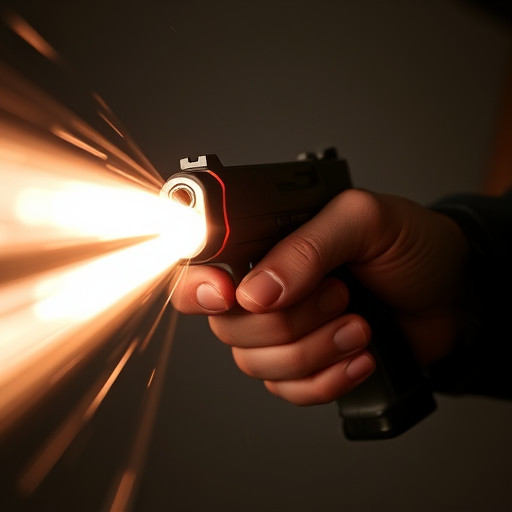Stun guns (electronic control devices) temporarily incapacitate targets through high-voltage, low-current electrical shocks. Their effectiveness in close quarters is optimized by proximity, design, power output, and environmental conditions. Real-world applications show successful self-defense deployments, reducing response time and lethal force. However, widespread adoption raises safety, legality, and ethical concerns, with variable regulations complicating accessibility and public perception of stun gun effectiveness.
“Uncovering the true potential of stun guns in close-quarters combat requires an understanding of their mechanics and the factors influencing their effectiveness. This article delves into the science behind these devices, exploring how they work and the conditions that enhance or hinder their performance. We analyze real-world applications, case studies, and the safety, legal, and ethical considerations surrounding stun guns, offering a comprehensive guide to their effectiveness in diverse scenarios.”
Understanding Stun Gun Mechanics and Their Operation
Stun guns, also known as electronic control devices (ECDs), work by delivering a powerful electrical shock to disrupt muscular control and cause temporary incapacitation. When deployed in close quarters, these weapons rely on proximity and direct contact to maximize their effectiveness. The stun gun generates an electric current that flows through the body, causing muscles to contract involuntarily, leading to loss of balance and coordination.
The operation of a stun gun involves several key components. A user activates the device by pulling a trigger, which initiates an electrical circuit. This results in a high-voltage, low-current discharge, typically delivered for a short duration. The shock is designed to be painful but non-lethal, with the intention of temporarily disorienting and neutralizing a target without causing severe injury. Understanding these mechanics is crucial when assessing the stun gun’s effectiveness in close quarters, where direct contact and proximity play a significant role in ensuring the intended outcome.
Factors Affecting Stun Gun Effectiveness in Close Quarters
The effectiveness of a stun gun in close quarters is influenced by several factors. One key factor is the proximity between the attacker and the target. In tight spaces, the stun gun’s electric current has less distance to travel, increasing its chance of successfully incapacitated the assailant. Another important aspect is the stun gun’s design and power output. Devices with higher voltage and more advanced delivery systems can penetrate resistance faster and deliver a more powerful shock, enhancing their effectiveness in close-quarters combat.
Moreover, the target’s physical attributes play a role. Larger individuals or those with high muscle mass may require higher voltage to override their natural defense mechanisms. Environmental conditions, such as weather and surface conductivity, can also impact performance. Moisture, for instance, can interfere with electricity flow, while dry conditions can enhance it. Understanding these factors is crucial for users to maximize the stun gun’s effectiveness in tight, close-quarter situations.
Real-World Applications and Case Studies
In real-world scenarios, stun guns have proven their effectiveness in close-quarters situations. Their primary application lies in self-defense, where individuals can use them to temporarily incapacitate an attacker, providing precious time to escape or seek help. Numerous case studies highlight successful deployments of stun guns by civilians and law enforcement alike, demonstrating their ability to neutralize threats without causing permanent harm.
These devices have been particularly useful in close-quarters combat, such as in confined spaces or during hand-to-hand encounters. Research shows that proper usage can lead to a significant reduction in response time and the need for lethal force. Case studies from law enforcement agencies suggest that stun guns can effectively disable aggressive subjects, allowing officers to control and de-escalate potentially dangerous situations, thereby enhancing public safety.
Safety, Legal Considerations, and Ethical Implications
The use of stun guns, or electroshock weapons, raises important safety concerns and ethical dilemmas, especially in close quarters. One of the primary considerations is ensuring user safety, as improper handling can lead to severe injuries or even death. Stun guns deploy an electric current that overrides the body’s natural functions, which requires users to understand their limitations and potential risks. Moreover, legal aspects play a significant role, as regulations regarding stun gun ownership, carrying, and use vary widely across jurisdictions, impacting accessibility and legitimacy.
Ethically, the implications extend beyond legal boundaries. The effectiveness of stun guns in close quarters can lead to debates about self-defense rights versus public safety. There are concerns about misuse or overreaction, particularly in situations where individuals might rely on them as a response to perceived threats. Additionally, the non-lethal nature of stun guns is not foolproof, and some argue that their use could escalate conflicts or cause unnecessary harm, especially if they become more readily available for civilian use.
